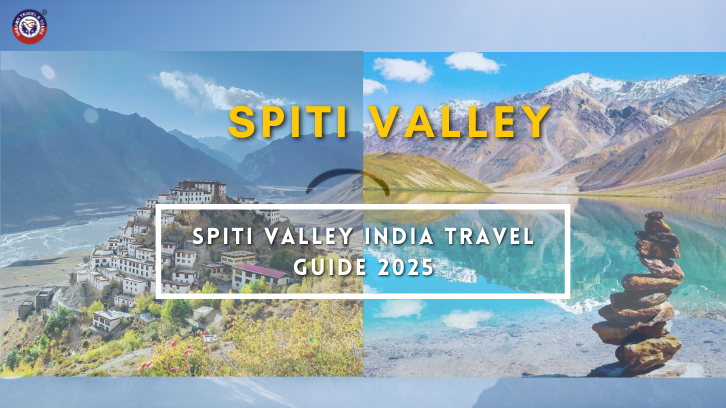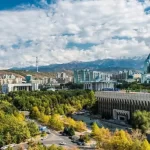Traveling in search of peace and unreal beauty or an explorer at heart, Spiti Valley India or tour packages by Dreams Travel and Tours should be first on your travel bucket list. Nestled in northeastern Himachal Pradesh, Spiti region is a chilly desert mountain region providing more than simply beautiful environment; it is a spiritual, cultural, and natural a haven.
- Where is Spiti Valley Located?
- How to Reach Spiti Valley
- Spiti Valley Distance from Delhi
- Spiti Valley Trip: What to Expect
- Top Spiti Valley Places and Things to Do
- Spiti Valley Best Time to Visit
- Best Time to Visit Lahaul Spiti Valley:
- Spiti Valley in May: A Perfect Summer Escape
- Spiti Valley Weather: What to Pack
- Spiti Valley Hotels: Where to Stay
- Spiti Valley Map and Navigation
- Spiti Valley Photos: Capturing the Magic
- Spiti Valley from India: An Ethereal Himalayan Escape
- Conclusion: Why Spiti Valley India is a Must-Visit

Table of Contents
Where is Spiti Valley Located?
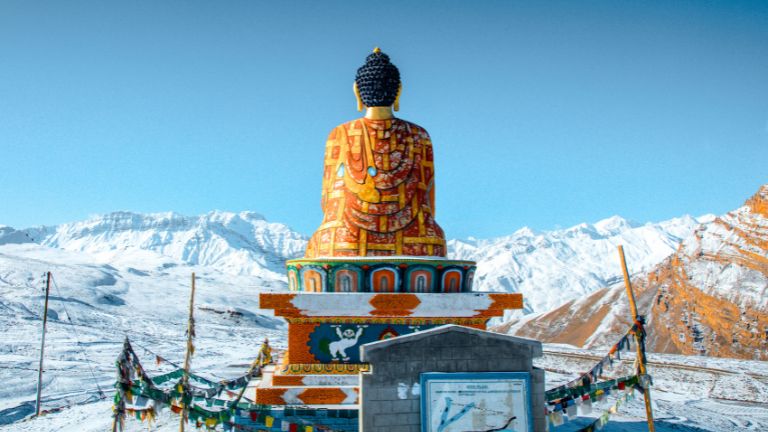
Located between Tibet and India, Spiti Valley in the Lahaul and Spiti district of Himachal Pradesh “Spiti,” which meaning “The Middle Land,” represents its special position halfway between the two nations. One of the most thinly populated areas in India, it ranges in elevation from 11,000 to 15,000 feet above sea level.
How to Reach Spiti Valley
Although some preparation is involved, reaching Spiti Valley is quite worth the work. You can select from the two often used paths:
- Via Manali, from May to October: Once the snow melts and flows across the well-known Rohtang Pass and Kunzum La, this road opens. Its rocky top makes it beautiful but difficult.
- This path is rather constant and passes through lovely places like Reckong Peo and Kalpa via Shimla (all year round unless after heavy snowfall).
Both routes provide breathtaking pit stops and chances for those wishing to see more locations in Himachal Pradesh—book a guided Himachal tour with Dreams Travel and Tours—to really absorb local culture.
Spiti Valley Distance from Delhi
Via the Shimla road, the Spiti Valley’s total distance from Delhi is roughly 730 kilometers; via Manali, it is roughly 750 kilometers. Depending on route and weather, the trip might last anywhere between sixteen and twenty hours; thus, it is advisable to break it with overnight breaks in middle towns.
Spiti Valley Trip: What to Expect
A tour in the Spiti Valley is unique from every other. From historic monasteries and unspoiled towns to dream lakes and mountain passes, every turn presents something remarkable.
Top Spiti Valley Places and Things to Do
Here’s a curated list of Spiti Valley places and things to do:
- Key Monastery: Providing breathtaking valley vistas, one of Spiti’s biggest and oldest monasteries
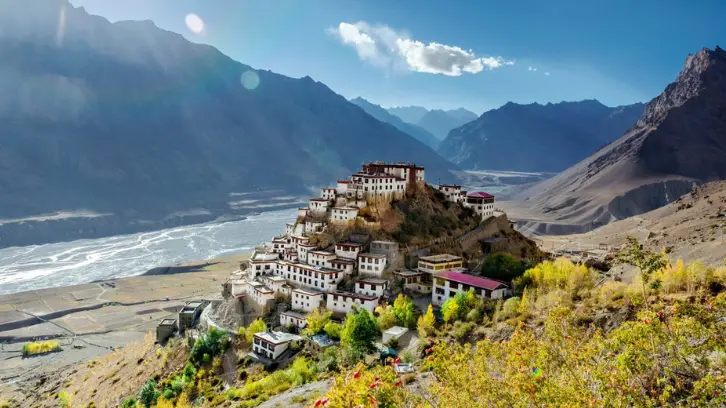
- Chandratal Lake: Perfect for camping, Chandratal Lake is crescent in shape and sparkles turquoise under sunshine.
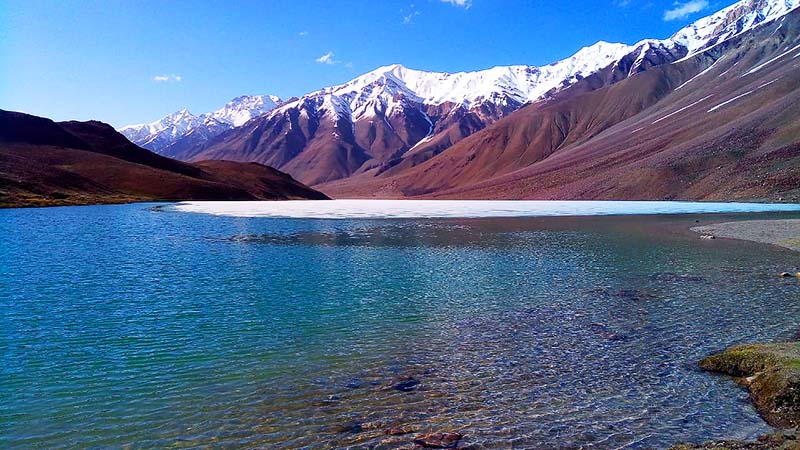
- Pin Valley National Park: Pin Valley National Park is a protected habitat for high-altitude animals like snow leopards and ibex.

- Dhankar Monastery: Perched dangerously on a cliff, Dhankar Monastery and Fort provides sweeping panoramic views.
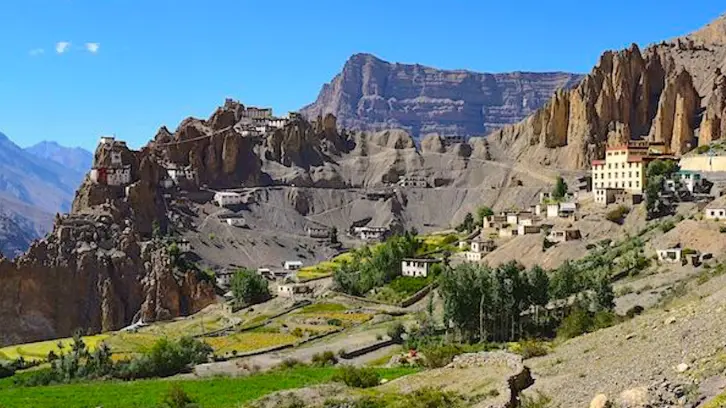
- Kibber Village: Among the highest motorable communities worldwide is Kibber Village.

- Langza Village: Langza Village is well-known for its soaring Buddha monument and ancient sea fossils.
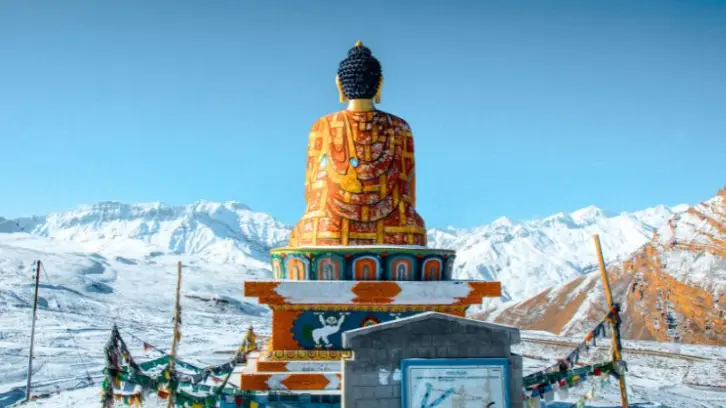
- Hikkim: Hikkim boasts the highest post office worldwide.

For both adventure seekers and those interested in culture, Spiti Valley is among the best destinations in Himachal Pradesh thanks to these attractions.
Spiti Valley Best Time to Visit
Thinking about when would be the ideal visit to Spiti Valley India? It mostly relies on the kind of experience you are looking for.
Best Time to Visit Lahaul Spiti Valley:
- May-October:Ideal for road journeys across Manali, May to October. The temperature is nice; all the highways and attractions are open.
- Nov-March: Winter (November to March) is for the courageous who want to witness scenes covered in snow and live in the isolated towns under severe circumstances.
Spiti Valley in May: A Perfect Summer Escape
Many people believe that the travel season starts in May with Spiti Valley. Usually opening in mid-to late May, the roads from Manali expose the valley in vibrant activity. As the snow melts, breathtaking sights of verdant meadows against the white backdrop of residual snow become evident. Trekking, camping, and interacting with the native way of life is fantastic right now.
Spiti Valley Weather: What to Pack
The Spiti Valley experiences harsh weather. Temperatures in Summers range from 5°C to 20°C; they are warm and sunny. Still, nights remain chilly. Temperatures in winters are severe; typically they fall to -20°C or less. Common is snowfall; many routes get obstructed.
What to Pack:
- Warm clothes, even in summer
- Sturdy hiking shoes
- Sunscreen and sunglasses
- First-aid and altitude sickness medicine
- Power bank and offline maps
Spiti Valley Hotels: Where to Stay
From luxurious eco-lodges to little homestays, Spiti has accommodation choices. These are some suggested Spiti Valley lodging and restaurants:
- Perfect for single visitors and trekkers is Zostel Spiti (Kaza).
- Charming traditional architectural boutique hotel Sakya Abode (Kaza).
- Tethys Himalayan Den (Chicham) offers peaceful surrounds and spectacular views.
- Local homestays (Langza, Hikkim, Kibber) provide the best means of really absorbing Spitian culture.
Along with comfort, staying with residents gives a thorough awareness of the particular way of life and difficulties of the valley.
Spiti Valley Map and Navigation
Having a Spiti Valley map is crucial as, particularly in outlying communities, mobile networks might be unstable. Most tourists depend on offline Google Maps downloads or Maps.me.
Big cities like Kaza serves as a center from which you may arrange visits to surrounding sites. Hiring a local guide or booking a group trip will help first-time guests find their way more quickly and informatively.
Spiti Valley Photos: Capturing the Magic
Every frame in Spiti qualifies as postcard. The valley presents unparalleled natural beauty regardless of your level of professionalism as a photographer or casual Instagrammer.
Popular photo spots include:
- Sunrise at Chandratal Lake
- Milky Way over Key Monastery
- Buddha Statue at Langza with the Himalayas behind
- Frozen waterfalls during winter months
Ask residents for hidden treasures and less-known views; typically, they lead to the most breathtaking pictures of Spiti Valley.
Spiti Valley from India: An Ethereal Himalayan Escape
Although Spiti feels like another planet, traveling from India to Spiti Valley is an adventure driven in discovery. Its remoteness has helped to retain its culture, so it seems unchanged by modern life. Whether your path in nature and self is spiritual, trekking, or a means of escape from metropolitan instability Spiti is a trip into that.
Conclusion: Why Spiti Valley India is a Must-Visit
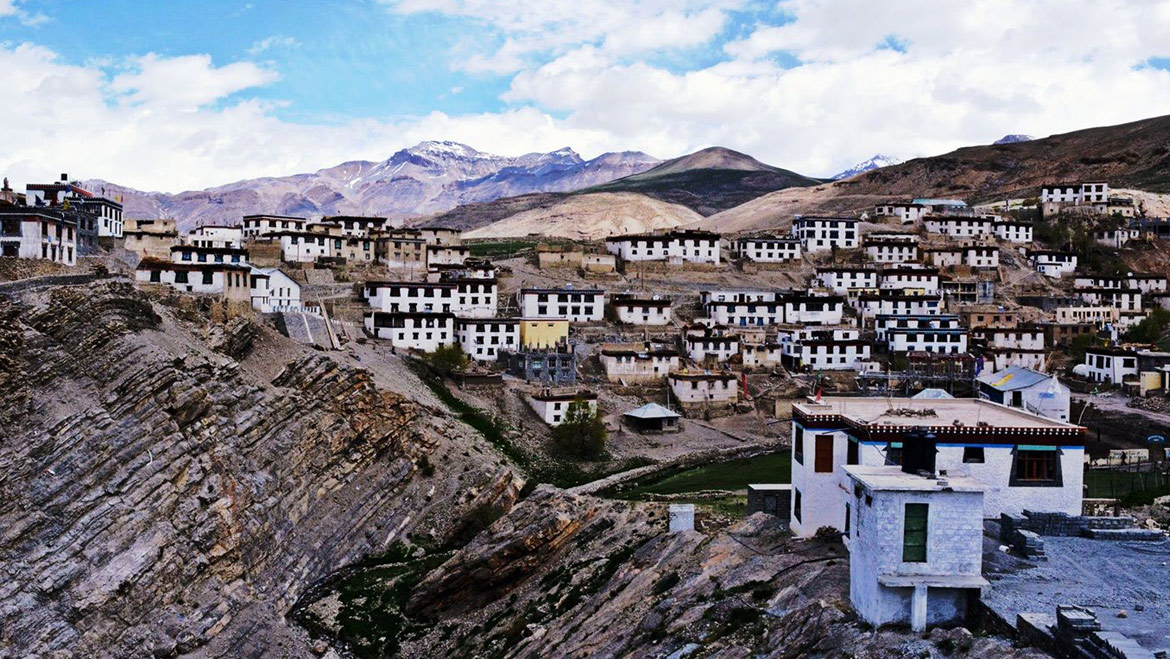
Visiting Spiti Valley India is a metamorphosis rather than only a journey. It reduces life to the most fundamental: pure air, friendly people, and limitless sky. It promotes tolerance, gratitude, and a relationship to something higher than ourselves.
Thus, Spiti Valley is waiting for you if you search for a place that transcends sightseeing—where every mile causes you to stop and every second humbles you.
One thing is certain: Your Spiti Valley journey will be unforgettable whether your travel plans call for the calm solitude of winter or the blossoming summer. To embark on this transformative journey, explore our Tour Packages or Contact Us for personalized assistance.
| Topic | Details |
| Best Time to Visit | May to October (Summer), Nov–March (Winter) |
| Distance from Delhi | ~730–750 km |
| Starting Point Options | Manali or Shimla |
| Altitude | 11,000–15,000 ft |
| Top Attractions | Key Monastery, Chandratal, Kibber, Langza |
| Accommodation | Homestays, Hotels in Kaza, Eco-lodges |
| Weather | Cold year-round; snow in winter |
| Internet/Network | Limited, best in Kaza |
| Required Permits | For foreign nationals, Inner Line Permit needed |

